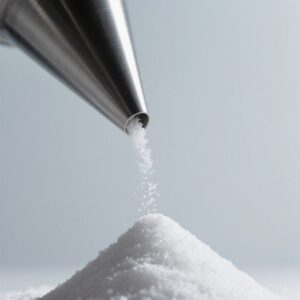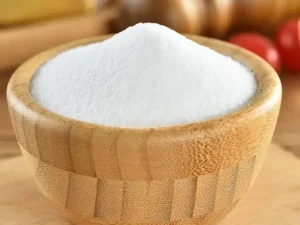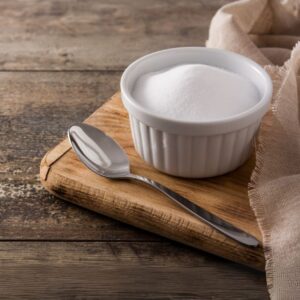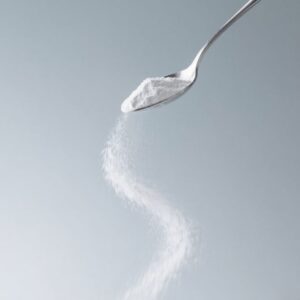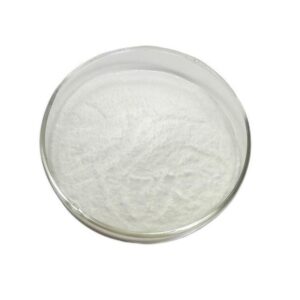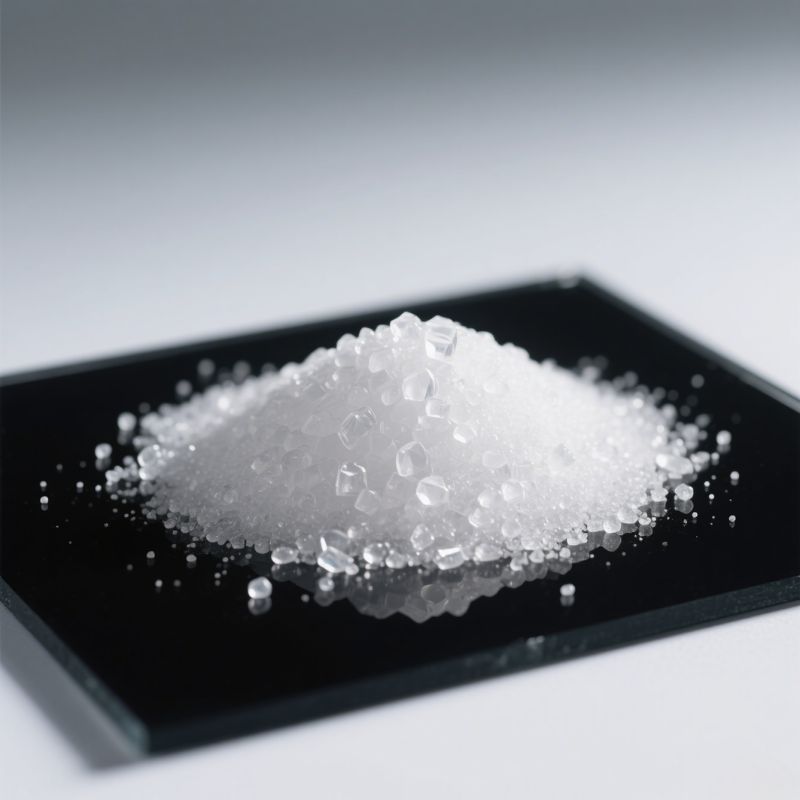Food Grade Sodium Tripolyphosphate Purchase Guide: Supplier Comparison and Industry Application Cases
Analysis of the international certification system and purchasing standards for food-grade sodium tripolyphosphate (STPP)
As an essential food additive, the international certification system of food-grade sodium tripolyphosphate includes multiple authoritative standards. Core certifications include ISO 22000 Food Safety Management System, FDA 21 CFR 178.3520 Food Contact Substance Permit, and EU EFSA Food Additive Assessment Certification. Unique application scenarios also require HACCP hazard control certification, BRC global food safety standards, Halal certification, and Kosher certification.
When purchasing food-grade STPP, you need to focus on the following indicators:
- Purity verification: the main content must be ≥94%, and the heavy metal (lead, arsenic) content must be ≤3mg/kg and ≤1mg/kg, respectively
- Functional indicators: pH value (1% solution) should be stable in the range of 9.5-10.5, and fluoride residue must be ≤10mg/kg
- Microbial control: total colony count ≤1000CFU/g, and Salmonella and Escherichia coli must not be detected
- Packaging specifications: double-layer food-grade PE bag + aluminum foil barrier packaging, marked with GMP production logo
High-quality suppliers should have FSSC 22000 certification and provide COA certificates from third-party testing agencies, focusing on batch differences within ±0.3%.
Comparison of industrial-grade and food-grade STPP testing indicators and purity verification methods
| Test Index | Industrial Grade Standard | Food Grade Standard | Testing Method Differences |
| Heavy Metals (Pb) | ≤50mg/kg | ≤3mg/kg | ICP-MS used for food-grade testing |
| Fluoride | ≤200mg/kg | ≤10mg/kg | Ion chromatography improves accuracy by 10x |
| Water Insolubles | ≤0.15% | ≤0.05% | Precision difference in centrifugal separation method |
| Main Content | ≥90% | ≥94% | Titration method used for both |
| Whiteness Value | ≥85% | ≥92% | Measured using spectrophotometry |
Purity verification requires a triple-testing system:
- ① Chemical titration method (GB/T 1607-2008) to determine P₂O₅ content, with an error of ±0.2%
- ② X-ray fluorescence spectroscopy to analyze the elemental composition and quickly screen impurities in 30 seconds
- ③ Ion selective electrode method to accurately detect fluoride residues, with a detection limit of 0.1ppm
- Food-grade products require additional microbial limit testing (GB 4789.2-2022) to ensure no risk of pathogenic bacteria contamination.
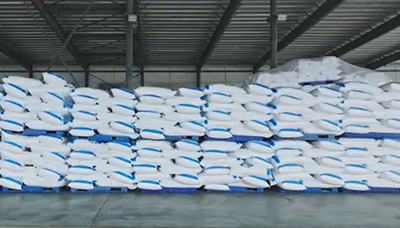
Quadrant evaluation of the technical strength and customized service capabilities of leading global suppliers
Technical strength evaluation dimensions
- R&D investment ratio: Leading companies generally maintain an annual R&D expenditure ratio of 3-5%, and European suppliers are leading in the field of environmentally friendly STPP modification technology
- Patent technology reserves: International TOP3 companies hold more than 60% of food-grade STPP core patents, and Chinese suppliers have achieved breakthroughs in crystal size control technology
- Testing equipment configuration: Equipped with ICP-MS (inductively coupled plasma mass spectrometer), it has become a standard for high-end suppliers, with a detection accuracy of 0.01ppm
Customized service capability model
- Formula response speed: Leading companies can complete the adjustment of customer-specified parameters such as particle size (50-150μm) and pH value (9.2±0.2) within 72 hours
- Flexible production capacity: Modular production lines can achieve flexible switching between 50kg-level small-batch customization and 1,000-ton stable supply
- Technical support system: Suppliers who have established application laboratories can provide scenario-based test data such as frozen product water holding rate and baking expansion
Supplier classification quadrant: ① Technology + service dual-excellence zone (European and American system) ②Technology advantage area (Japan and South Korea) ③Cost advantage area (Southeast Asia) ④Follower area (emerging manufacturers)
Logistics cost difference model between STPP suppliers in Southeast Asia and China.
Cost components
- • Ocean freight cost: Container freight from Southeast Asia to major ports in China is 120-150 USD/TEU higher than domestic land transportation
- • Tariff difference: ASEAN member countries enjoy a 0% agreed tariff, which increases the VAT deduction difference by 3.2% compared with domestic cross-provincial procurement
- • Inventory turnover cost: Importers need to maintain 45 days of safety inventory, which increases the capital occupation cost by 18-22% compared with local procurement
Dynamic cost model
$$C{total} = (F{transport}×D{distance}) + (Q{order}×T{duty}) ) + (H{inventory}×R_{interest})^{1/2}$$
- • When the purchase volume is more significant than 200 tons, the cost advantage of local suppliers is apparent (transport radius <800 km)
- • In the emergency replenishment scenario (delivery time < 7 days), the response speed of the Yangtze River Delta industrial cluster is 62% faster than that of Southeast Asia
- Risk adjustment coefficient
- • Impact of exchange rate fluctuations: Southeast Asian procurement needs to include 3-5% exchange rate hedging costs
- • Fluctuation of customs clearance time: The standard deviation of customs clearance time at Southeast Asian ports is ±2.3 days, which is significantly higher than the stability of domestic logistics
STPP freeze-thaw stability improvement plan and excessive addition response strategy in aquatic product processing
Freeze-thaw stability improvement plan
- • Gradient addition method: Using a staged impregnation process, the STPP addition concentration is controlled between 0.3% and 0.5%, and the cell water retention effect is improved by adjusting the osmotic pressure gradient so that the ice crystal formation is more uniform.
- • Synergistic enhancement technology: Compound trehalose (1:0.2) or sorbitol (1:0.3), using the hydrogen bond network to strengthen the water-holding capacity of myofibrillar protein, can reduce the freeze-thaw cycle loss rate by 12%- 18%.
- • Dynamic pH control: During the processing, the pH value of the solution is maintained in the range of 8.5-9.2, and the ion binding efficiency is improved by enhancing the negative charge density of the protein.
Over-addition countermeasures
- • Sensory correction technology: For products that have exceeded the standard (STPP>5%), nisin (0.02g/kg) and citric acid (0.5%) are compounded to effectively mask the metallic astringency and inhibit the proliferation of microorganisms.
- • Texture repair solution: A 30-minute ultrasonic-assisted calcium ion (0.05mol/L CaCl₂) cross-linking treatment is used to rebuild the three-dimensional network structure of muscle tissue.
- • Compliance adjustment: Sodium pyrophosphate (SAPP) is introduced to replace STPP in a ratio of 1:3 while maintaining water retention performance and meeting the EU (EC No 1333/2008) limit standards.
The mechanism of the effect of phosphate compound application on product texture in baked food
The triple effect of texture regulation
- • Gluten network modification: When sodium pyrophosphate (SAPP) and STPP are compounded at a ratio of 1:2, the dough proofing time is extended by chelating excess calcium ions (Ca²⁺ concentration ≤ 50ppm), which increases the gluten extensibility by 23%-27%.
- • Starch gelatinization regulation: Sodium hexametaphosphate (SHMP) and STPP can synergistically reduce the starch gelatinization temperature by 4-6℃, enhance the starch gas holding capacity through phosphating reaction, and increase the specific volume of bread by 15%-18%.
- • pH buffer system: Sodium tripolyphosphate and calcium dihydrogen phosphate (MCP) form a dynamic buffer pair (pH 6.8-7.2), which inhibits the premature inactivation of yeast while ensuring the moderate hydrolysis of proteases and improving the crispness of biscuits.
Functional verification method
- • Rheological analysis: The change of dough elastic modulus (G’) was measured by mixing tester, and the ratio was optimized to control the loss tangent value (tanδ) in the ideal range of 0.35-0.45.
- • Texture profile test: Using TA.XT Plus texture analyzer, the TPA mode, was used to quantify the effect of compound phosphate on key indicators such as product hardness (≤800g) and chewiness (≥350mJ).
- • Microstructure observation: Combined with SEM electron microscopy, the distribution density of phosphate groups on the surface of starch granules was observed to ensure that the degree of modification was controlled in the active range of 12% % to 18%.
Quality dispute arbitration and rapid testing process design under a multi-source supply layout
Establish a three-level dispute handling mechanism in the multi-source supply chain system:
- • Supplier self-inspection and review: Require suppliers to provide batch test reports issued by CNAS-certified laboratories and upload them to the blockchain traceability system simultaneously
- • Third-party blind sample testing: Disputed products are packaged into 3 independent samples and sent to SGS, Intertek, and Huace Testing for parallel testing of 18 core indicators such as pH value (1% solution), P2O5 content, and heavy metal residues
- • Technical Arbitration Committee: A joint arbitration group composed of experts from the Food Additive Standardization Technical Committee, process engineers from application companies, and representatives of testing agencies will make a final ruling based on GB 25566-2010 and FDA 21 CFR 173.310 standards
Rapid testing process optimization plan:
- • On-site initial screening uses a handheld near-infrared spectrometer (wavelength range 1200-2400nm) to complete the moisture content and main component prediction within 3 minutes
- • Establish an ion chromatography rapid detection channel to compress the detection time of anions such as F⁻, Cl⁻, SO4²⁻ to 15 minutes/sample
- • Develop a supply chain collaborative quality dashboard system to achieve real-time sharing of detection data and automatic early warning
Operation Guide for Procurement Cost Control and Futures Hedging during Phosphate Rock Price Fluctuation Period
2025 Cost Control Three-Dimensional Model:
1. Dynamic Inventory Model:
When the spot price of phosphate rock fluctuates by more than ±8%/quarter, start the intelligent adjustment algorithm for inventory water level.
Set the strategic reserve inventory baseline to 120%-150% of the average monthly usage
2. Futures Hedging Strategy:
Use CME phosphate derivative contracts for cross-period hedging, and recommend H3/H5 contract combination hedging.
Establish a price insurance mechanism: When the DAP (diammonium phosphate) futures price breaks through the warning line of US$360/ton, it automatically triggers 20% position protection
3. Procurement channel optimization:
The proportion of long-term contract purchases of Morocco’s OCP Group is controlled at 40-45%
Develop emerging supply sources such as Vietnam’s Camimex Group to form a flexible purchase pool of 15%-20%
Key points of risk hedging operations:
- • Basis risk management: monitor the spot price difference between Hubei Yihua and Yuntianhua and set a basis ratio warning range of 0.8-1.2
- • Dynamic calculation of margin: reserve liquidity funds at 18%-22% of the value of futures contracts
- • Establish a purchasing alliance: form a bargaining alliance with enterprises with an annual consumption of more than 5,000 tons to strive for bulk discount terms.
